
Written by Tiger Research, this report analyzes Wayfinder’s innovations in AI-powered DeFi infrastructure and its impact on blockchain accessibility.
TL;DR
-
DeFi claims to be open to everyone, but its complex availability makes it difficult for ordinary investors to access.From preparing for Gas fees to understanding complex protocols, many users have abandoned promising investment opportunities because of the complex procedures involved.
-
Wayfinder is an on-chain dedicated AI agent system designed to solve these accessibility issues.Without complex professional and technical understanding, users can execute professional-level investment strategies through simple conversations with agents, ranging from cross-chain transactions to basis transactions.
-
Wayfinder will expand to API services in the future and is expected to be widely used in a variety of Web3 projects as an infrastructure that simplifies on-chain complexity.The availability of Wayfinder API will improve the user experience across the cryptocurrency industry, making “accessible financial services for everyone” a reality.
1. Is DeFi really open to everyone?
DeFi aims to create an open financial ecosystem.Anyone is free to participate.However, it requires complex technical knowledge and advanced financial skills.This creates a huge gap between ideals and reality.
Chain Abstraction and Account Abstraction emerged to reduce this gap.These technologies improve user experience.But they lack standardization.The protocols that support them are still limited.The fundamental problem lies in the complexity of learning.Technical improvement alone cannot solve this problem.Users still have to understand the concepts unique to DeFi.These concepts include AMM (automatic market makers), liquidity pools and non-permanent losses.Therefore, DeFi sets a higher threshold than traditional finance.
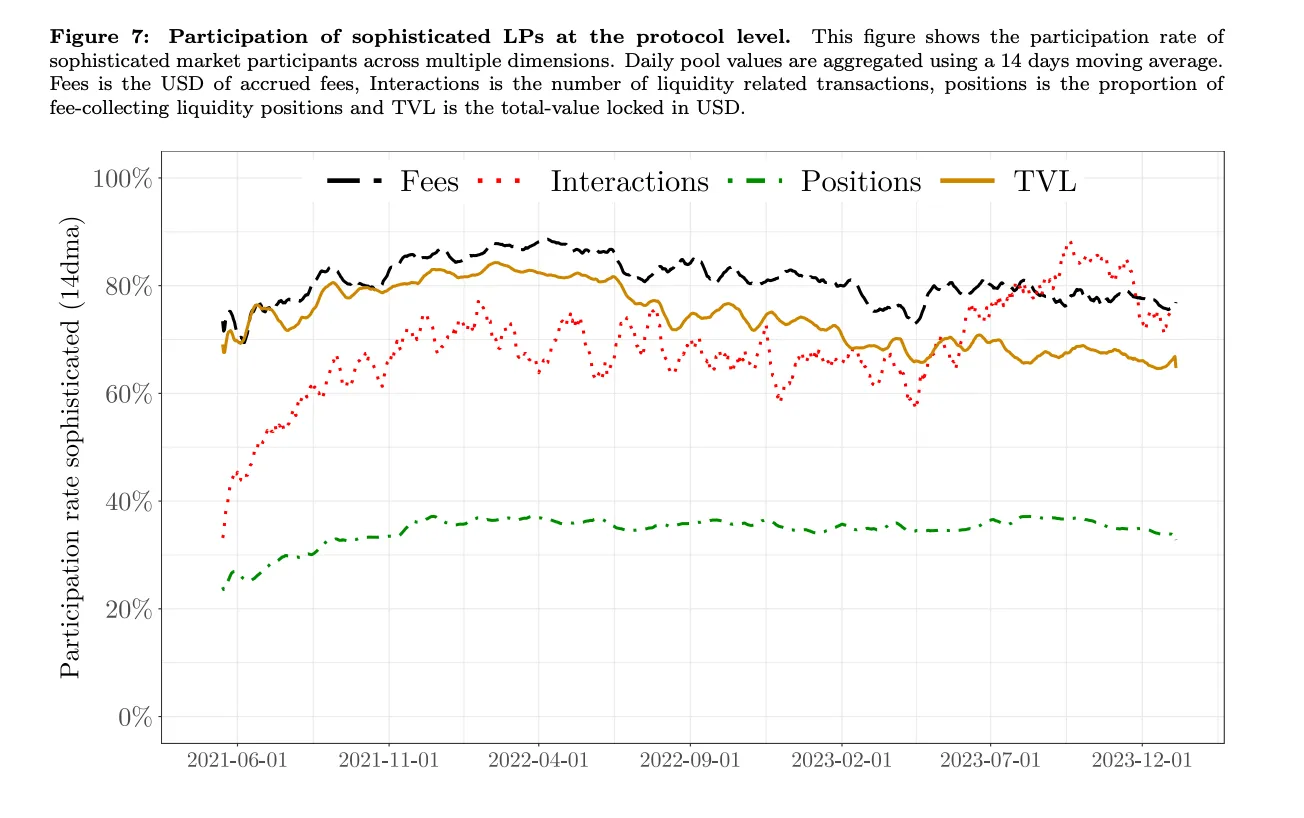
Mature LP participation at the protocol level, source: BIS
This is clearly demonstrated by the Bank for International Settlements (BIS) research.In the leading DeFi protocol Uniswap V3, only 7% of liquidity providers control about 80% of TVL (total locked value).These professional users are skillfully harnessing complex systems.They achieve a return rate of 20% higher than that of the average user.This gap exists even in Uniswap.Uniswap is the most widely used DeFi protocol.It provides a relatively good user experience.This suggests that accessibility issues affect the entire DeFi ecosystem.It is not limited to specific protocols.
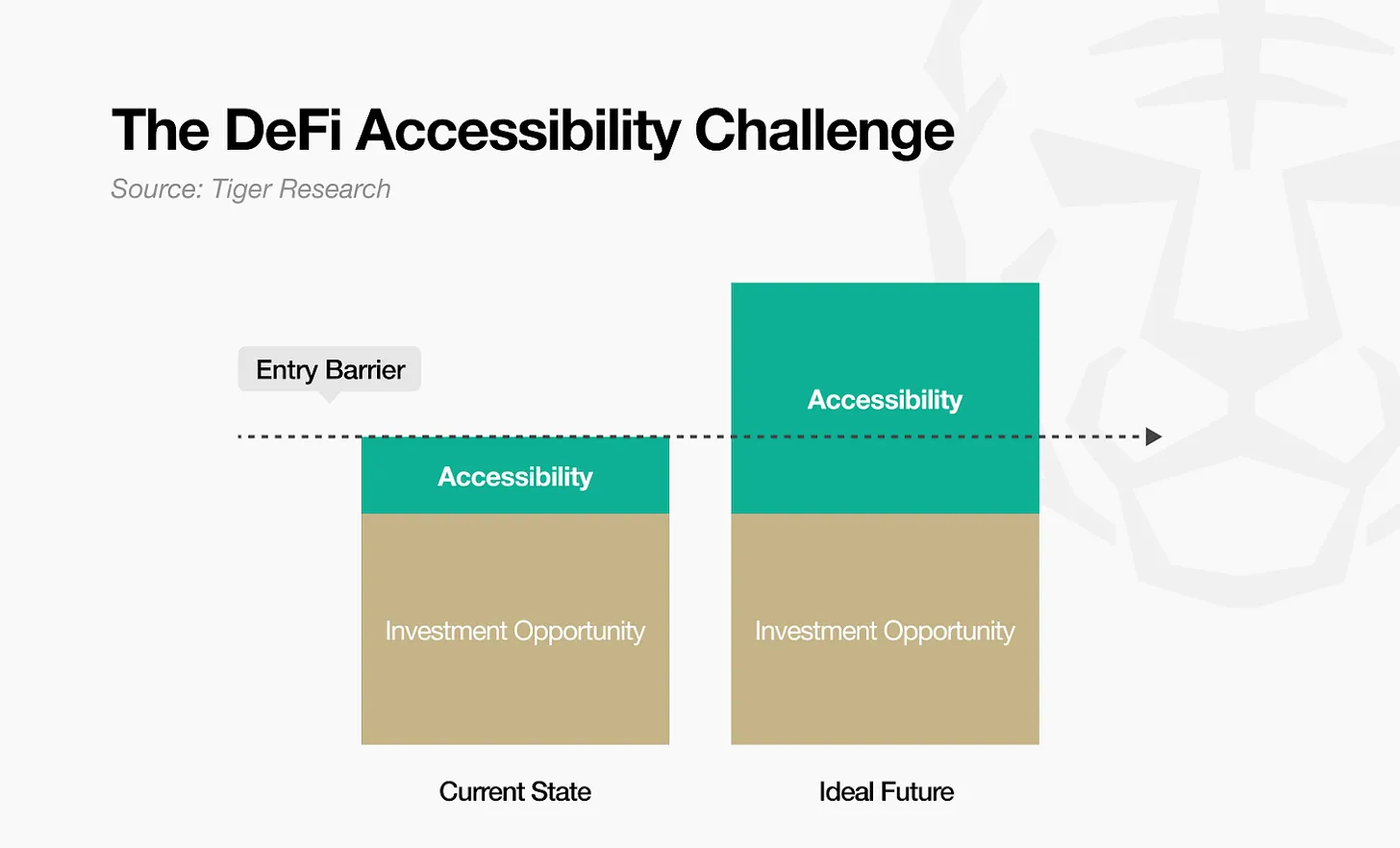
The DeFi ecosystem faces clear issues that need to be addressed.It forces existing users to get endless learning and decision-making fatigue.It makes new users completely abandon entry.The complex access process discourages users.This can happen even with attractive investment opportunities.As a result, DeFi is becoming an exclusive field for professional users.This goes against the original vision of achieving financial innovation through decentralized technologies.The commitment to universal participation has not yet been fulfilled.High barriers to entry and poor availability limit its potential.
2. Can AI solve the high entry threshold for DeFi?
Recent AI breakthroughs have brought new possibilities to lower the threshold for DeFi access.Agent AI (Agentic AI) technology has emerged.It goes beyond just providing intelligence.AI can now perform complex tasks as hands and feet.This may be the key to achieving mass adoption of DeFi.
Consider this example.User request: “Bridge my ETH from Base to Solana and buy Memecoin BONK.” An AI agent analyzes dozens of bridge options in real time.It offers clear options:
-
Wormhole: Cost 2.50 USD, 3 minutes to complete, high safety
-
LayerZero: Cost 1.80 USD, 5 minutes of completion, with a risk of gas fee fluctuation
Users do not need to learn the complex technical differences between bridges.They can make decisions quickly using the key information provided by the agent.Users do not need to manually connect their wallets.They don’t have to execute complex transactions.The intelligence will automatically handle everything.It’s like having a skilled personal asset manager 24/7 to handle financial tasks.
But there are fundamental challenges to realize this vision.Most AI technologies currently lack direct blockchain integration.It can’t even check the wallet balance in real time.Even with the integration of direct blockchain nodes, understanding thousands of different smart contracts presents another challenge.Secure interaction with these contracts is complex.How to verify and ensure the security of the protocol remains an additional challenge.
AI technology requires a dedicated on-chain agent system to create real value in DeFi.This is where Wayfinder comes on.
3. Wayfinder: On-chain dedicated AI intelligent system
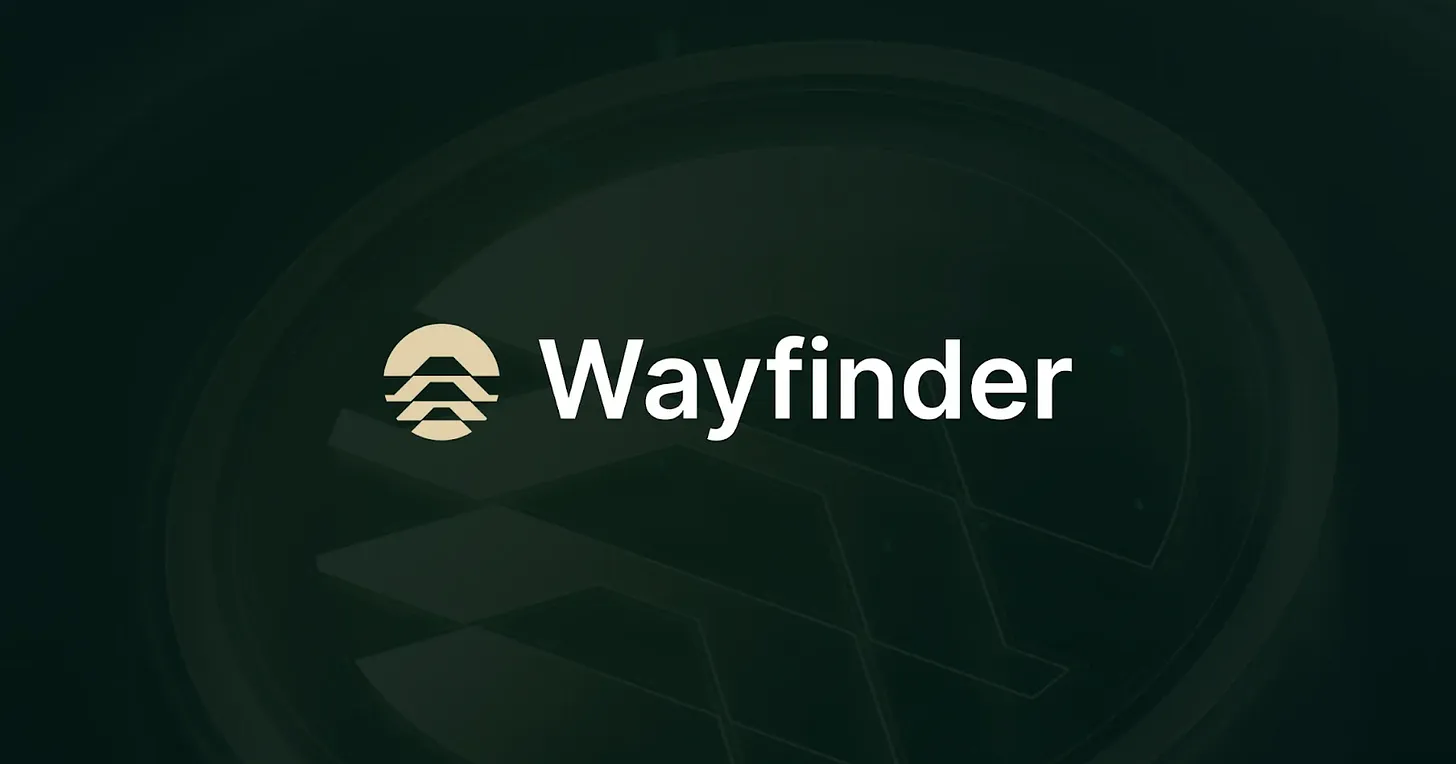
Source: Wayfinder
Wayfinder provides AI agent systems designed for on-chain environments.Unlike general agents, Wayfinder agents directly integrate with blockchain infrastructure.They automatically perform on-chain tasks.The AI model is specially fine-tuned for the blockchain environment.They navigate and utilize DeFi protocols more efficiently than general models.This provides an environment for ordinary users to access complex DeFi ecosystems.Users do not need professional technical knowledge.
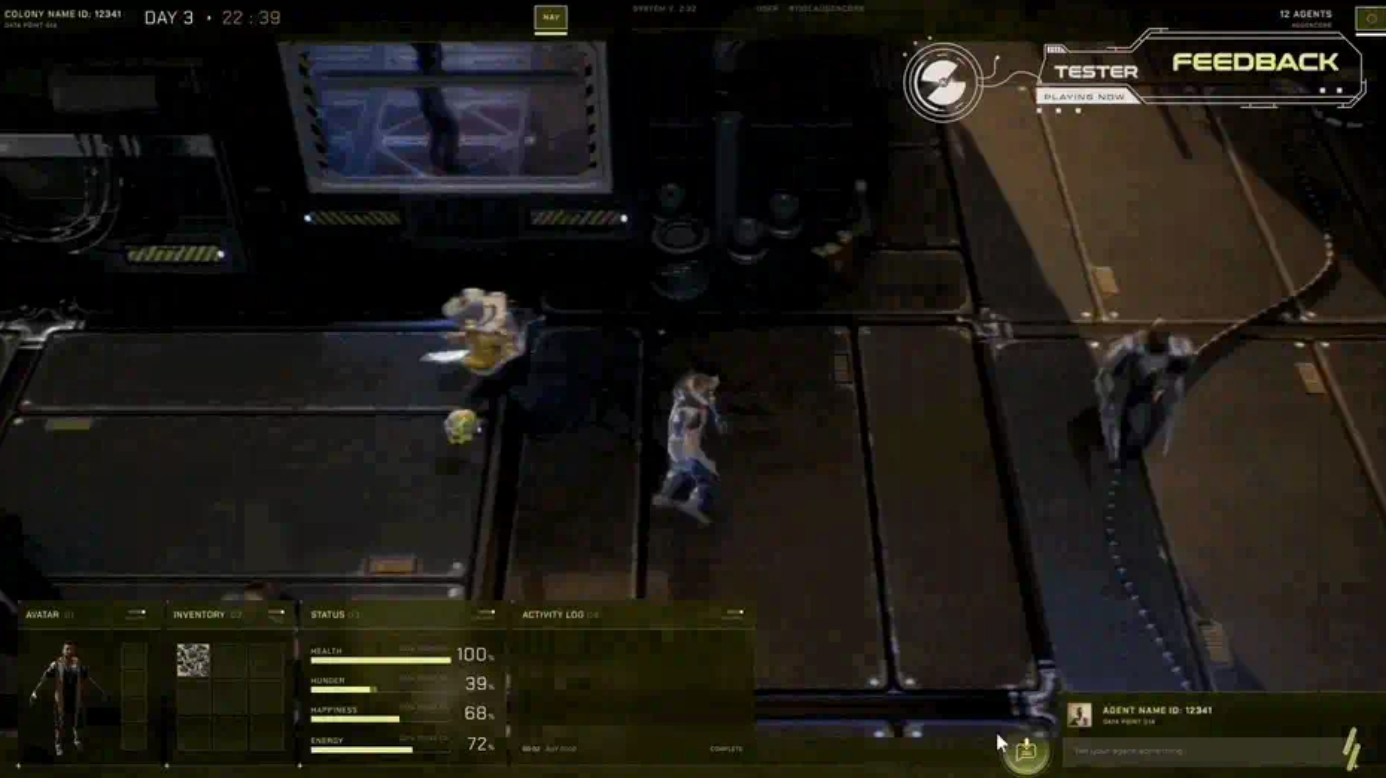
Colony: Independent AI Avatar Game Play, Source: Parallel Studios
Wayfinder’s origins can be traced back to Colony.Colony is an AI-based survival simulation game.It is developed by Web3 gaming company Parallel Studios.In Colony, AI avatars run independently.They collect resources without player intervention.They trade with other avatars.They develop survival strategies.During development, Parallel Studios discovered potential.These AI agents’ autonomous on-chain activities can be extended beyond the game.They can work in a DeFi environment.This discovery led to the development of the Wayfinder project.
Wayfinder consists of two core elements.First, Wayfinder Shell is an interface that enables users to interact with various dedicated agents.Secondly, Wayfinder Graph is a navigation system that helps agents find the optimal path in complex multi-chain environments.
3.1. Wayfinder Shell: Your exclusive DeFi private banker
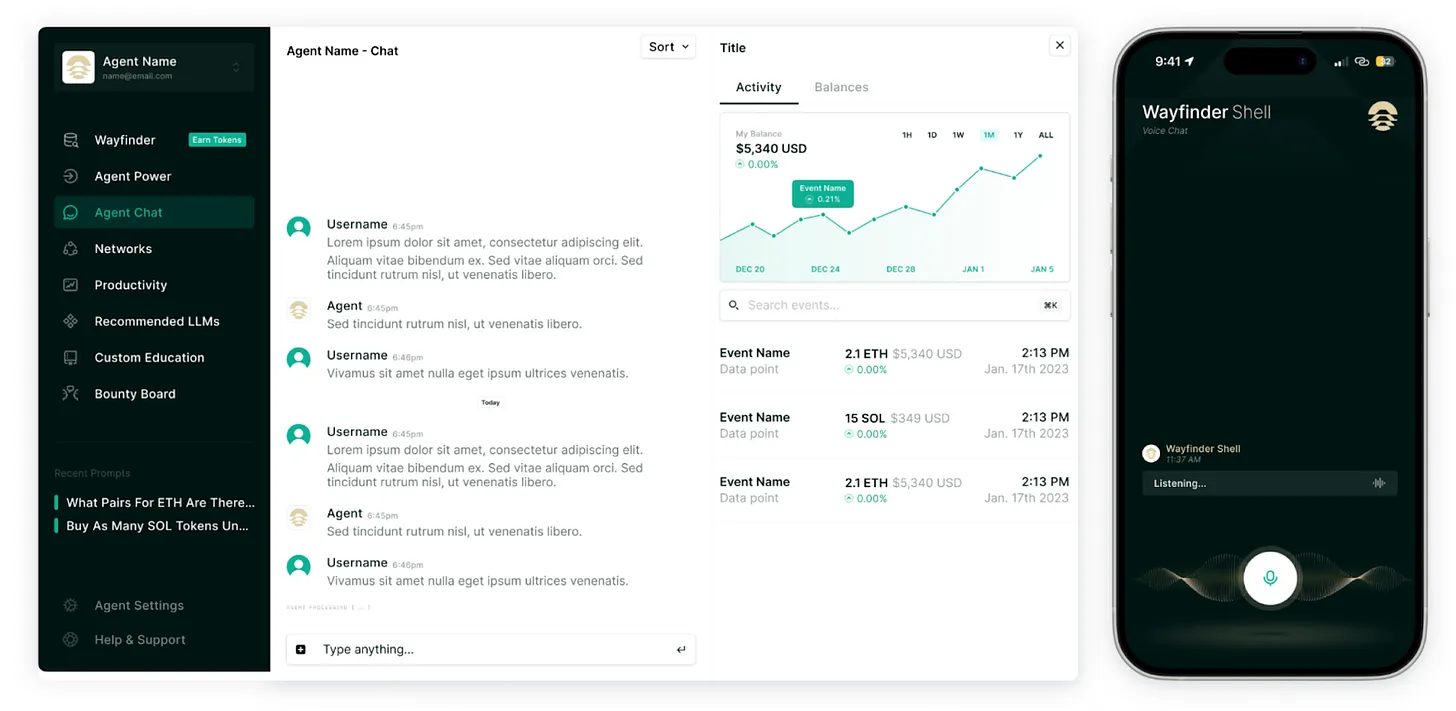
Wayfinder Shell, source: Wayfinder
Wayfinder Shell (Shells) serves as an interface where users interact with dedicated agents to formulate and execute various on-chain policies.Shells provides role-specific agents.These agents collaborate organically in response to user requests.They handle complex tasks efficiently.Shells supports major mainnets including Ethereum, Solana, Base and Avalanche.This makes it possible to smooth asset management in a multi-chain environment.
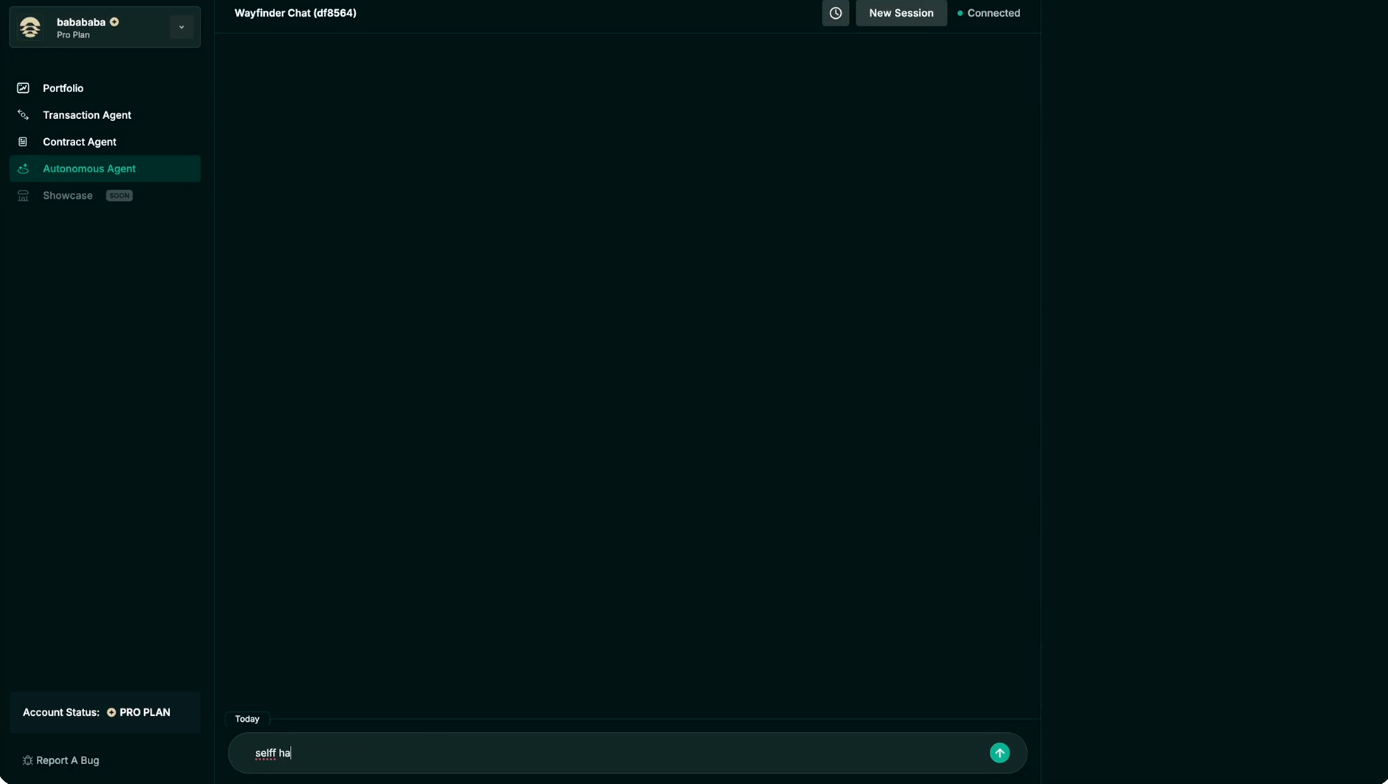
The biggest feature of Shells is that the agent performs direct on-chain transactions through a built-in dedicated Web3 wallet.For example, users requested a diversification of $100 USDC in tokens that showed upward trends on Solana over the past week.Agents use real-time market data to filter tokens.It builds the portfolio and executes the investment directly.Users can easily execute the required investment strategies through a single interface without the need for complex technical understanding.
Wayfinder’s agent system consists of four types:
-
Transaction Agent: handles basic on-chain asset transfers and management, including token exchange, bridging and staking.
-
Perpetual Agent: Integrated with HyperCore, the on-chain order book engine of Hyperliquid exchange.It supports spot or perpetual contract trading without understanding Hyperliquid.It also supports a variety of strategies including leverage setting, position management and basis trading.
-
Contract Agent: handles all contract-related tasks, from smart contract writing to deployment and analysis.
-
Autonomous Agent: Coordinate multiple agents according to the goals set by the user.It handles the integrated role from strategy development to execution, rebalancing and risk management.
Various special agents will be added in the future.These include Yield Finder Agents specifically for revenue optimization.This will expand the ecosystem.Wayfinder utilizes a multi-agent system where each agent verifies and collaborates with each other.This makes decisions more stable and accurate.For operations that require multiple transactions (for example, bridge USDC from Ethereum to Base, convert half to wBTC, and deposit both into AAVE), the agent runs the simulation on a virtual network (VNet) before executing the transaction.This predicts the results and prevents agent errors or hallucinations.Important transactions require user approval.Users maintain full control over their assets.
3.2. Wayfinder Graph: DeFi’s Google Maps
Wayfinder Graph is a navigation system that systematically organizes complex blockchain ecosystems.Google Maps connects road, construction and traffic information around the world in real time.It guides users to the optimal route.Similarly, Wayfinder Graph constructs the relationship between DeFi protocols, smart contracts and assets in various blockchain networks.This helps the agent perform tasks through the most efficient path.
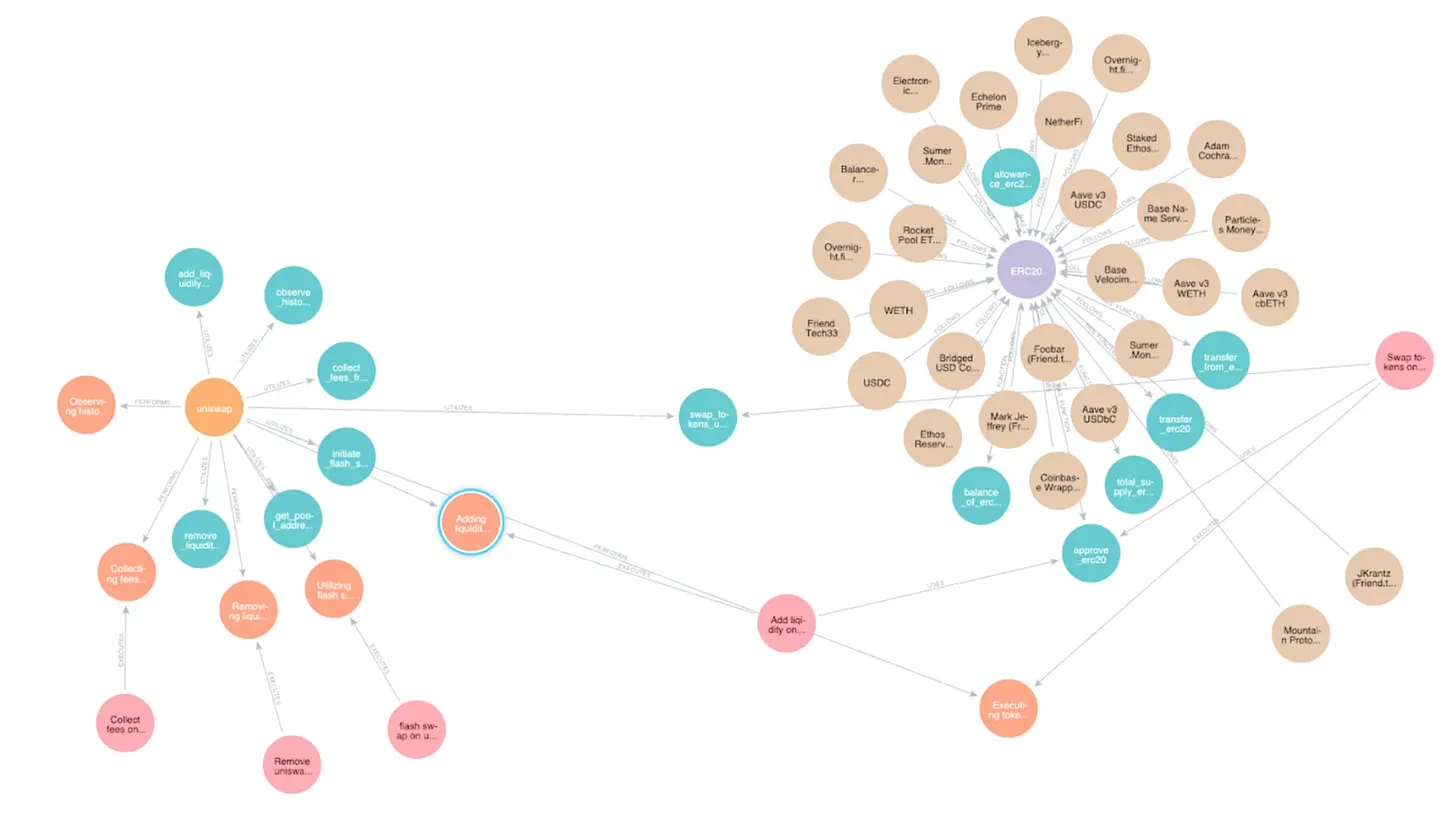
Wayfinder Graph, source: Wayfinder
The core of the graph system is “wayfinding Paths”.Google Maps provides detailed, step-by-step guidance for routes such as “take the subway from home to Seoul Station”.Each pathfinder works similarly.It defines specific tasks step by step.Examples include “Redeem ETH to USDC on Uniswap” or “Bridge USDC from Ethereum to Arbitrum”.Each path records details.This includes the required smart contract address, function call method, expected costs and considerations.The agent does not need to start from scratch every time to find the path.They use proven routes to complete tasks quickly and safely.
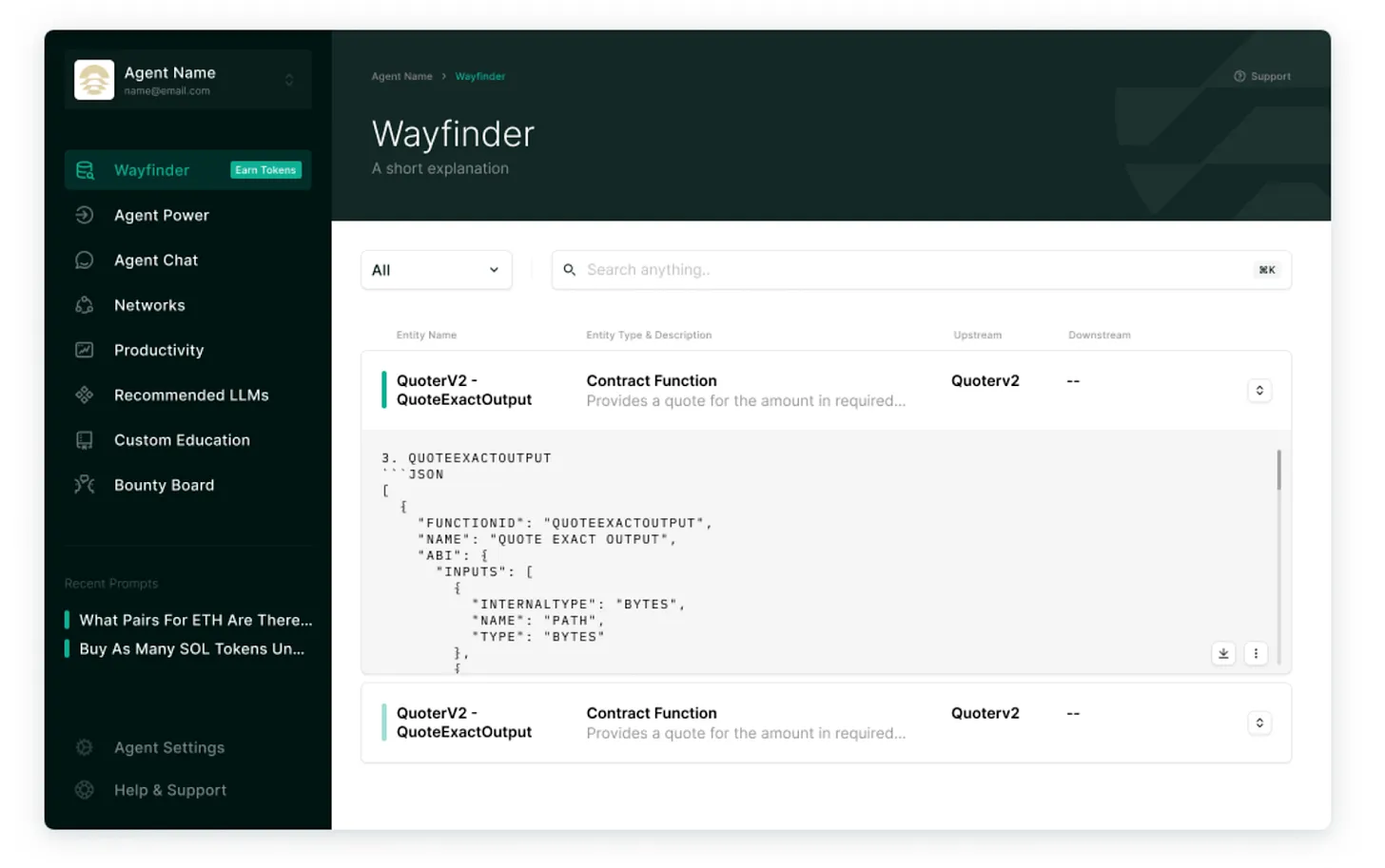
Wayfinder Path, source: Wayfinder
In the future, the community will create and manage paths.For example, when a new DeFi protocol appears.Community participants can write and submit paths to interact with these protocols.They must pledge PROMPT tokens as collateral.Path Verifier reviews submissions.Only approved paths are added to the official library.All shells can use approved paths.When other shells use their paths, the path creator receives a portion of the fee.On the contrary, the wrong path can cause losses.The creator and validator of the staked token will be slashed.These tokens are used to compensate victims.This structure operates as a continuous quality management system, beyond simple rewards.The staked token remains locked even after the path is approved.They act as security mechanisms.This provides path creators with incentives to continuously manage accuracy and security.
Wayfinder expects to ensure scalability through the community, rather than adopting a slow and limited approach that directly integrates with all protocols.Google Maps users can register their location directly or leave comments.This improves the quality of the map.Similarly, Wayfinder can be flexible in responding to the rapid changes and complexity of the DeFi ecosystem through a community-centric approach.
4. A new DeFi experience implemented by Wayfinder
With Wayfinder, complex on-chain strategies are no longer exclusive to experts.Automated agent processing strategy formulation and implementation.Beginners can easily manage expert-level strategies.Experts can get rid of repetitive tasks.They can focus on more complex designs.
The following case shows how Wayfinder tailors a new DeFi experience for different user levels from regular users to professional traders.
4.1. Complex cross-chain transactions make it simple
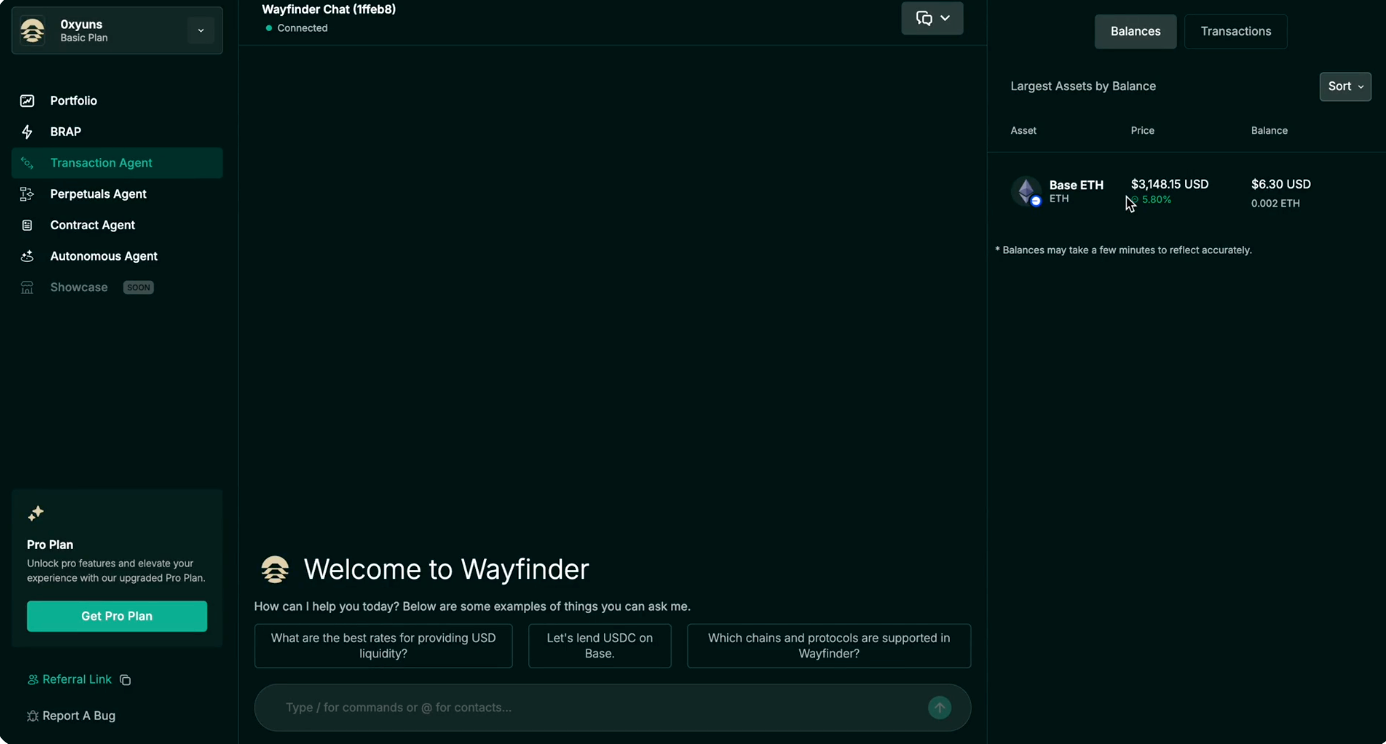
One of the most troublesome aspects of on-chain transactions is preparing different Gas fee tokens for each chain in advance.For example, Ethereum requires ETH and Solana requires SOL.Transferring USDC from Solana to Ethereum requires SOL as a Gas fee.Without SOL, users must go through a tedious process.They need to bridge USDC from Ethereum to Solana.They then redeem that USDC for SOL.
Shells’ trading agent solves this complexity through the BRAP (Optimal Rate Aggregation Protocol) engine.The BRAP engine explores multiple liquidity paths.It finds the optimal route and processes token exchange and bridges.Users can get a one-stop experience without complex processes.In addition, Wayfinder supports uniform processing of Gas fees across multiple chains using only Base chain-based PROMPT tokens.Users no longer need to prepare native tokens individually for each chain.They can execute cross-chain transactions efficiently.
4.2. Repeated investment process achieves one-stop operation
Wayfinder can execute complex investment strategies that go beyond simple token exchange or bridge.A representative example is the leverage-based DCA (USD Cost Average Method) strategy.Investors set conditions once.They can continuously execute complex investment strategies without repeated manual work.
Suppose the user requests: “Buy BTC through DCA for $100 per week. When the BTC price rises and the collateral value increases, I want to borrow additional funds with that surplus to buy more BTC.” The autonomous agent first analyzes the real-time interest rate and TVL of multiple lending protocols such as Aave and Compound.It selects the optimal protocol.
Then, the trading agents sequentially execute the leveraged investment strategy.It deposits the BTC it holds as collateral.It borrows USDC equivalent to a percentage of the collateral value.It buys additional BTC with borrowed USDC.It deposits the purchased BTC as collateral again.This process is repeated.Even if the initial investment is only one BTC, users can operate positions equivalent to 3-4 BTC scale.
The agent executes the strategy within the range of risk parameters set by the user.It continuously monitors conditions such as up to 3x leverage and -10% loss limit.When the market falls, it tracks the collateral rate.When the liquidation risk increases, it automatically reduces some positions to prevent risks.
4.3. Professional-level transactions for beginners
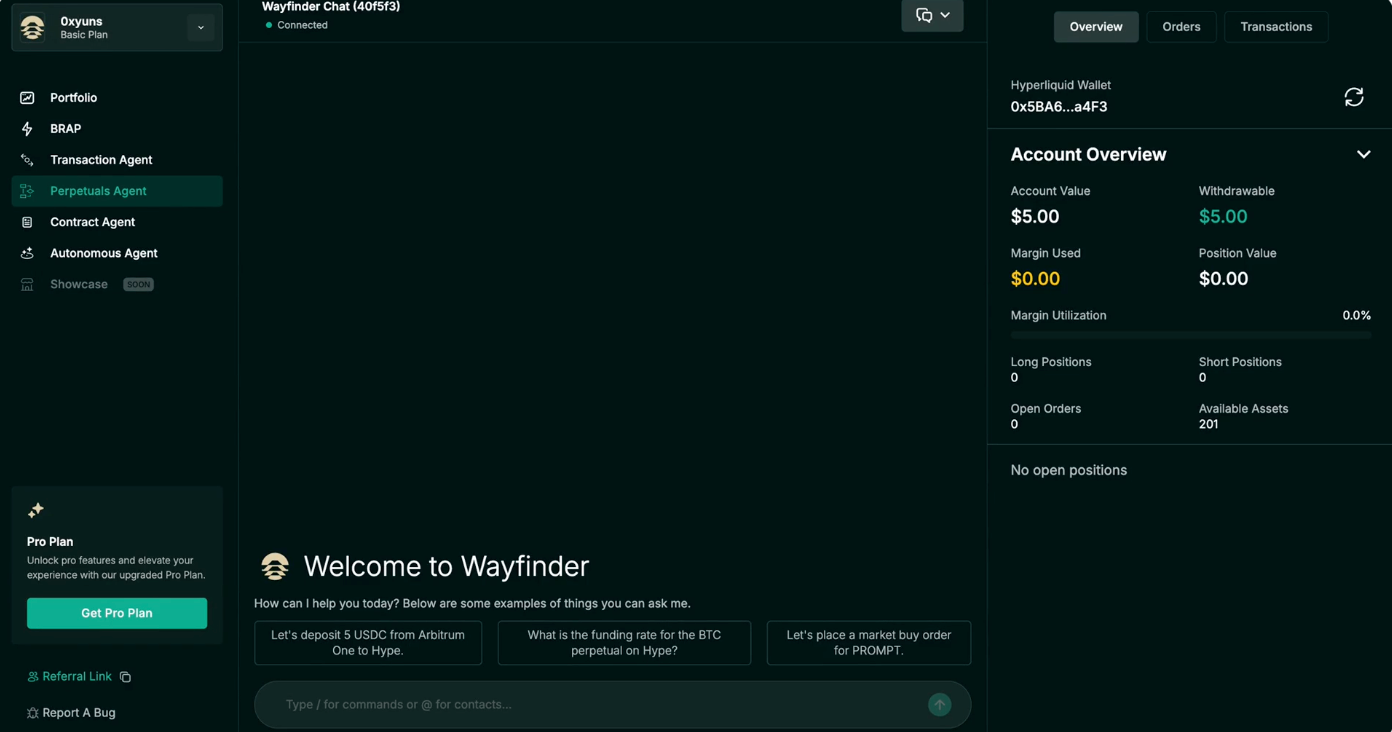
Basis Trading is an arbitrage strategy that takes advantage of the price difference between spot and futures markets.It can especially generate stable returns through funding rates.However, this field has always been exclusive to institutional or professional traders.It requires understanding complex mechanisms and 24-hour monitoring.Wayfinder’s perpetual contract agent integrates with Hyperliquid’s on-chain order book engine “HyperCore”.This provides an environment for ordinary users to easily utilize these strategies.
For example, the user requests: “Perform basis transactions based on the funding rate of the HYPE token.” The transaction agent transfers the user’s assets to the Hyperliquid wallet generated within the shell.Perpetual contract agents purchase HYPE tokens in the spot market and open equal short positions in futures.This creates a structure that holds both (spot) long and (futures) short positions.Regardless of the market direction, users can generate profits from capital fees.
If the funding rate for a $10,000 position is +0.08%, the user can earn approximately $8 in fee income.Autonomous agents can continuously monitor funding rates with the capabilities of the permanent contract agent.It automatically closes the position when profitability drops or the fee rate turns negative.
Users can generate stable profits through Wayfinder without understanding the basic trading mechanism.They do not need experience or knowledge about Hyperliquid exchanges.Intelligent experience dealing with everything.
5. The future of DeFi is accessible
Market opportunities for cryptocurrencies are still concentrated on the chain.For example, Trump currency ($TRUMP) was first traded on decentralized exchanges earlier this year.It has brought dozens of times the return for early investors.However, it is difficult for most users to quickly discover its existence.Even if they know it, the process is not simple.They have to access exchanges like Jupiter or Raydium.They have to connect their wallets and transfer assets to invest.
Wayfinder is expected to bridge the gap.Users can communicate with agents through dialogue.They can easily formulate and execute various strategies from simple token purchases to yield farming and automatic rebalancing.Policies that were previously handled by experts only may be open to the average user.This could be an important turning point in the industry.The market responds quickly to simple accessibility improvements.Trump’s currency trading volume immediately recorded dozens of times after its listing on Moonshot.Similarly, Wayfinder can make various on-chain activities, including DeFi, easier.It can expand the user base and drive market activity.This change could have a positive impact on the expansion of the cryptocurrency industry.
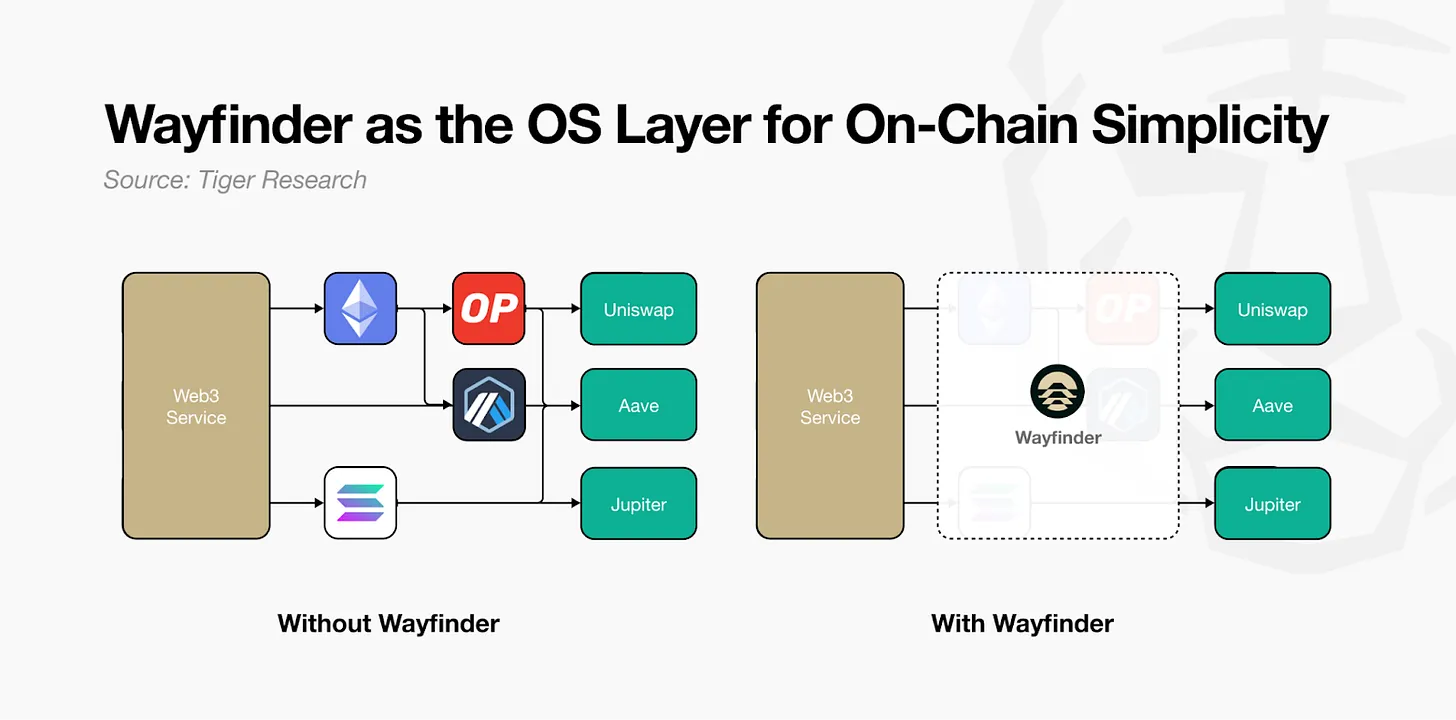
In the long run, Wayfinder has the potential to develop into an operating system (OS) role in on-chain environments.Wayfinder plans to provide functionality in the form of an API.This creates a structure that enables various services such as Web3 wallets, DApps, and exchanges to easily call and use complex on-chain tasks without directly implementing them.Just as Windows or macOS abstracts complex hardware controls into simple click operations, Wayfinder provides a layer that processes on-chain tasks with a single natural language command.
This enables each service to provide new features beyond existing limitations.For example, MetaMask currently only offers simple redemption features.Through integrated Wayfinder, users can directly execute complex strategies such as “automatically rebalancing my portfolio to 60% ETH, 40% BTC”.Exchanges like Binance or Coinbase can also improve user experience with Wayfinder.They can provide complex DeFi products with a more intuitive interface.They can gain significant advantages in their competition with the DeFi ecosystem.
Ultimately, Wayfinder is expected to grow into an infrastructure that transcends DeFi and improves the user experience of the entire cryptocurrency industry.It can realize the initial ideal of DeFi “financial services that everyone can enjoy”.







